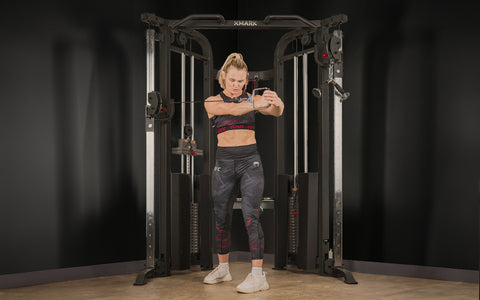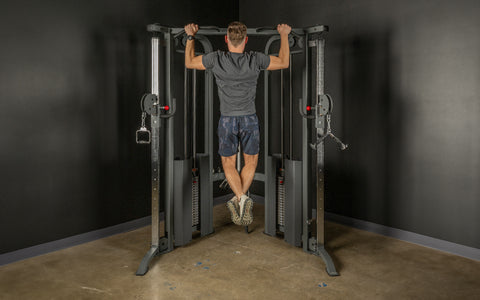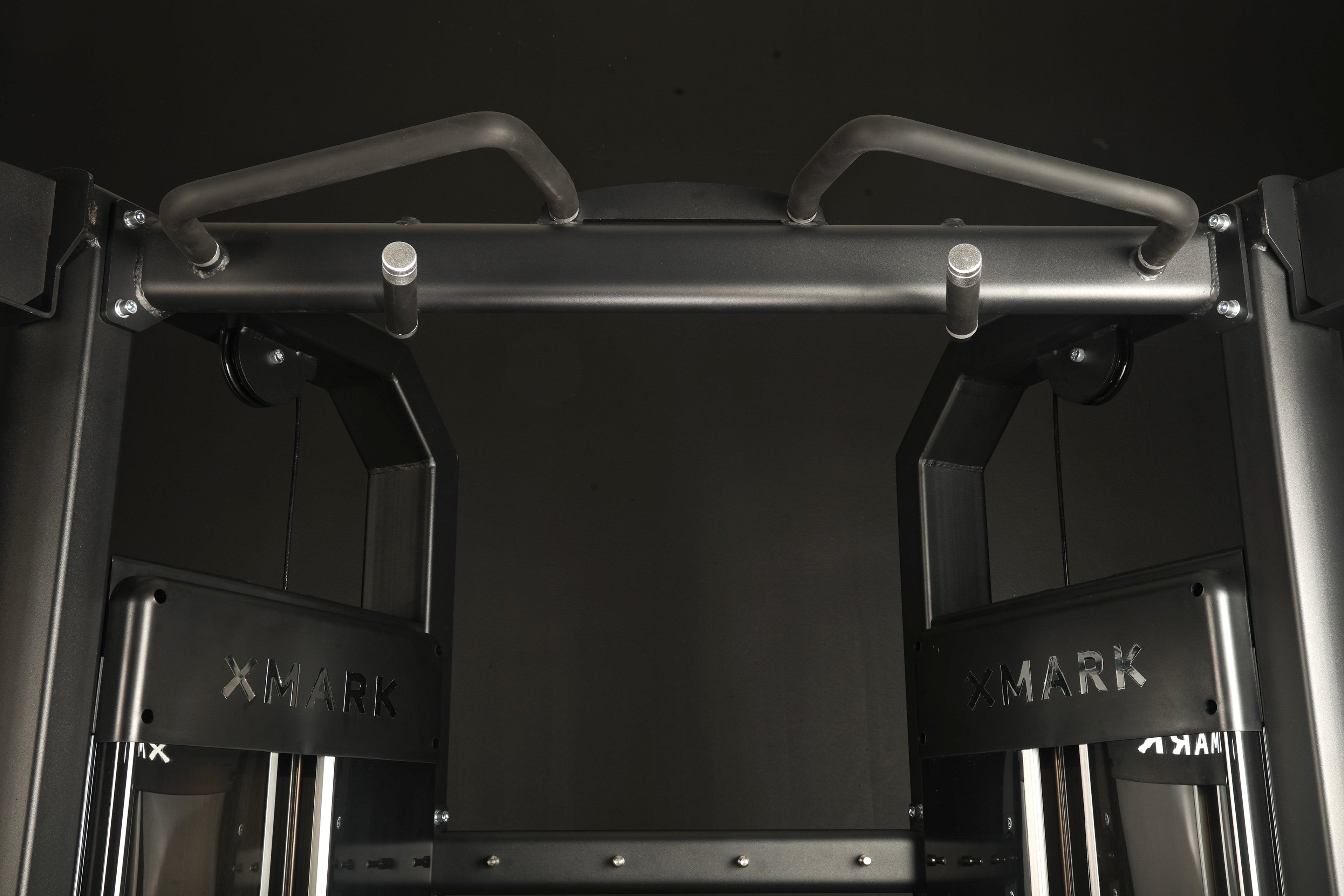Introduction to Functional Trainer Core Exercises

A strong core is the foundation of a healthy and active life. Whether you're an athlete looking to improve your performance, someone seeking better posture, or simply aiming to stay injury-free, a solid core is crucial. In this guide, we'll explore how you can achieve core strength from the comfort of your home using functional trainer exercises. These versatile pieces of equipment offer adjustable resistance, making them an excellent choice for developing your core muscles.
We'll begin by discussing the importance of core strength and its far-reaching benefits, including stability, posture, and injury prevention. Then, we'll delve into how functional trainers can be used for core workouts.
We'll provide step-by-step instructions for five effective functional trainer core-strengthening exercises. Additionally, we'll share core-strengthening techniques, a sample core exercise routine, and essential tips for maintaining proper form.
The Importance of Core Strength
A strong core serves as the linchpin of stability and good posture, offering a solid foundation for various aspects of your physical well-being. Let's delve deeper into the significance of core strength in these key areas.
Stability and Posture
Imagine your core as the central pillar that upholds the structure of your body. When your core is weak, it struggles to maintain the alignment of your spine and pelvis. As a result, you might find yourself slouching, especially if you spend long hours sitting at a desk or on your feet. Poor posture is not merely an aesthetic concern; it can have far-reaching consequences for your health.
A weak core can lead to an imbalance in the distribution of weight on your spine and pelvis, causing you to lean forward, backward, or to the sides. This misalignment puts excessive stress on your spinal discs, potentially leading to conditions like herniated discs or chronic back pain. Furthermore, poor posture can impact your respiratory system, reducing lung capacity and oxygen intake and affecting your overall well-being.
Maintaining a strong core ensures that your spine and pelvis are in their optimal positions, reducing the risk of poor posture-related issues. With a stable core, you can stand or sit upright, distributing your body weight evenly. This not only prevents discomfort but also promotes overall physical comfort and a sense of confidence in your appearance.
Injury Prevention
A robust core serves as your body's natural armor, offering protection against injuries. It acts as a stabilizer during physical activities, especially those involving dynamic movements, and provides essential support to your spine.
For instance, when you lift heavy objects, your core muscles contract to brace your spine, minimizing the risk of strains or sprains. Without this support, lifting heavy weights can lead to injuries, particularly in the lower back.
Likewise, in sports and physical activities, a strong core plays a pivotal role in safeguarding your well-being. Whether you're playing football, basketball, or participating in martial arts, your core muscles are actively engaged to maintain your balance, absorb impact, and generate power. A well-conditioned core can help you withstand external forces and prevent injuries, such as twisted or strained muscles.
Functional Movements and Sports Performance

The importance of a strong core becomes particularly evident in sports and functional movements. These activities require a combination of stability, balance, and power generation. Here's how a strong core comes into play in these scenarios:
- Swinging a Golf Club: A powerful golf swing demands core stability and rotation. A strong core allows golfers to transfer energy efficiently from the ground through their legs, hips, and torso to the clubhead. This rotational force is key to achieving distance and accuracy in golf.
- Boxing: In boxing or martial arts, a strong core is essential for generating force in punches. It allows fighters to twist their hips and torso, delivering knockout blows with precision and power. The core acts as the central pivot point for delivering these powerful strikes.
- Sprinting: Sprinters rely on core strength to maintain balance and control during explosive sprints. A well-conditioned core ensures they can maximize their speed and agility, propelling them forward with efficiency and reducing the risk of wobbling or stumbling.
- Rock Climbing: Rock climbing is another activity where a strong core plays a critical role. Climbers engage their core to stabilize their bodies on the rock face, allowing them to move from one hold to the next with balance and control. The core muscles are essential for maintaining a steady center of gravity, especially when climbing vertically or horizontally on challenging routes.
In summary, a strong core is not only crucial for static activities like maintaining good posture but is equally vital for dynamic and high-impact movements in sports and daily life.
It serves as your body's anchor, offering stability, protection, and power generation, making it an integral part of your overall fitness and well-being.
Using a Functional Trainer for Core Work

Functional trainers are versatile pieces of gym equipment that allows you to perform a wide range of exercises, including those targeting your core. They consist of adjustable cable pulley systems that provide customizable resistance. This adaptability makes functional trainers ideal for building core strength at home.
Functional trainers offer various attachments, such as ropes, bars, and handles, which you can use to target different core muscles. The pulley system allows for a full range of motion to build functional core strength, making it suitable for exercises that involve twists, bends, and stretches.
Functional Trainer Core-Strengthening Exercises
1. Cable Crunches
As far as functional core exercises go, cable crunches are fantastic for targeting the rectus abdominis, commonly known as the "six-pack" muscles. To perform this exercise, attach a rope handle to the cable pulley system, kneel down, and crunch your upper body toward your knees, focusing on the contraction of your abdominal muscles.
2. Woodchops
Woodchops are excellent for building oblique strength. By attaching a handle to the cable, you can perform this exercise that involves a rotational movement. It engages your oblique muscles and enhances core strength and stability.
3. Pallof Press
The Pallof Press is a core stability exercise that emphasizes anti-rotation. By attaching a handle to the cable and performing presses away from the anchor point, you'll challenge your core muscles to resist rotation, improving your stability and balance.
4. Leg Raises
Leg raises using a functional trainer target the lower abdominal muscles. Attach ankle straps to the cable and raise your legs while maintaining control throughout the movement. This exercise helps build lower abdominal strength.
5. Russian Twists
Russian twists are great for oblique development. Attach a rope or bar handle to the cable and twist your torso from side to side while seated. This exercise enhances your rotational core strength.
Core-Strengthening Techniques

1. Progressive Overload
To continue building core strength and stability, it's essential to progressively increase resistance. You can achieve this by adjusting the weight stack on the functional trainer or using resistance bands as your core becomes stronger.
2. Isometric Holds
Incorporating isometric holds into your core exercises enhances endurance and stability. Pause at the peak of a movement and hold for a few seconds to challenge your core muscles further.
3. Variation and Combination
Don't stick to a single exercise routine. Change exercise variations and combine movements to challenge your entire core from different angles. Variety is essential for a well-rounded core workout.
4. Proper Form and Breathing
Maintaining proper form and controlled breathing during functional core exercises is crucial. This not only prevents injury but also maximizes the effectiveness of each exercise.
Sample Functional Core Training Exercise Routine
Warm-Up
Before starting your core workout, warm up with exercises like planks, cat-cow stretches, or torso twists. This will prepare your core and increase blood flow to the muscles.
Workout
- Cable Crunches - 3 sets of 12-15 repetitions
- Woodchops - 3 sets of 10-12 repetitions (each side)
- Pallof Press - 3 sets of 10-12 repetitions (each side)
- Leg Raises - 3 sets of 12-15 repetitions
- Russian Twists - 3 sets of 10-12 repetitions (each side)
Cool-Down
Finish your core workout with stretches like the child's pose, cobra stretch, and seated forward bend. These stretches will improve flexibility and reduce muscle tension in your core.
The decision to incorporate functional trainer core exercises into your home workout routine is a strategic investment in your overall fitness and well-being. As the core is often referred to as the body's powerhouse, strengthening it comes with a multitude of advantages that extend far beyond just aesthetics.
Closing Thoughts
Incorporating functional trainer core exercises into your home workouts is not just a fitness choice; it's a decision to invest in your long-term health and well-being. The benefits of a strong core are wide-reaching and extend to all aspects of your life. Improved stability and posture, injury prevention, and enhanced performance in sports and functional movements are the fruits of your efforts.
As you embark on this journey to improve functional core strength, remember to pay close attention to proper form and technique in your strength training exercises. This not only maximizes the effectiveness of your functional core workouts but also safeguards you from potential injuries.
Additionally, keep in mind the principle of gradual progression. Over time, you'll want to challenge your core by increasing resistance and difficulty, ensuring continuous growth and development.
Consistency is the key to reaping the full rewards of your efforts. By making core exercises a regular part of your fitness routine, you'll achieve a solid and stable core that will serve as your body's reliable anchor, supporting you in all your daily activities and promoting a healthier, more active lifestyle.
Related Articles:
- What Is a Functional Trainer? Benefits, Features & Examples
- Functional Trainer Exercises for Your Home Gym Workout
- Affordable Home Gym Setup: Your Budget-Friendly Guide
Product Recommendations
If you're looking for functional trainer equipment to enhance your core workouts at home, consider the following options:

